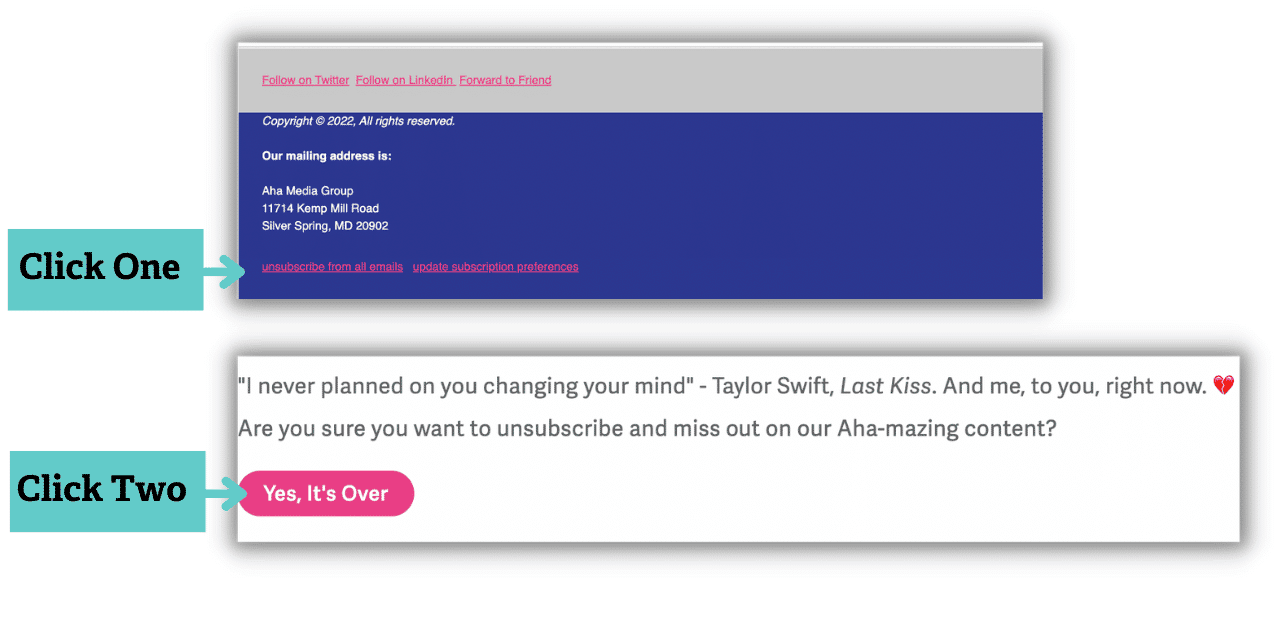What makes an email, well, click? What’s the just-right formula that convinces a recipient to open your email instead of sending it to the trash?
Marketers pay a LOT of attention to email behaviors to find these answers. And the industry is rich with data you can use to implement an effective email strategy.
Why should we care so much about email? Because email is a highly measurable and inexpensive marketing tool. For every $1 spent on email marketing, you can expect a return of $36.
In 2024, people around the world are sending and receiving an estimated 361.6 billion emails every day. And that number is rising. So in a world where email is only getting more prevalent, here are 20 stats you need to know.
Results of our email marketing investigation
Nothing like some firsthand research, right? We send thousands of emails each month and analyze each one for opens, clicks, loyalty, and results. We’re passing along some lessons we’ve learned and email stats that help us hone our strategy. Hopefully, these tips can save you some trouble and help you solidify your email game.
Open and unsubscribe rates
1. Your open rate might be inaccurate. We were trusting the open rate numbers our email service provider (ESP) reported, but something felt off. To check this, we sent an email at 3 a.m. What are the odds that our readers are awake and checking their email at 3 in the morning?
Well, according to our report, half of our opens on that email came in right after it was delivered. Big red flag.
Why the false opens? Many ESPs have security measures to scan incoming emails for harmful content and links. They do this by “clicking” on all the links in the email. So, the sender’s ESP detects this as a “read” email.
The biggest culprits? B2B email recipients in highly regulated fields like healthcare. Ding, ding, ding! That’s many of our recipients.
There’s no way around these auto-scans. And while your open rate may be inaccurate, chances are it’s consistent. Use this metric for directional data tracking instead of taking it at face value.
2. Check your unsubscribe rates. Email guru Jay Schwedelson opened our eyes to the possibility of accidental opt-outs because of single-click unsubscribes.
Sometimes, clicking on an unsubscribe link in an email takes you to a page where you must confirm. But sometimes, it’s a single click, and you’re instantly off the list.
In the second scenario, the ESP security bot click could inadvertently unsubscribe your followers. This was the case for us. We reviewed recent emails and saw clusters of unsubscribes right after sending. And some of them were all from the same company. Uh-oh.
The fix? Set up a double opt-out. Now, when someone wants to unsubscribe from Aha Media emails, they get sent to a landing page to confirm they want to break up with us. Now we know every unsub is intentional.
Email usage stats
- Some healthcare email info: The average open rate for the healthcare industry is about 45%, and the average click-through rate is 3.08%. (GetResponse)
- Email is prolific. Very. 88% of email users check their inboxes multiple times a day. (Optinmonster)
- Email outperforms social media posts by 13% and social media ads by 11%. (Optinmonster)
- People prefer email. 55% of consumers who want to keep up to date with businesses they support say that email is their preferred means of communication. Email far outpaces other methods like text messaging and social platforms. (Constant Contact)
- Email leads to action.6% of consumers say they’ve purchased as a result of a marketing email they received. (Constant Contact)
- Email is global. More than half the world’s population (over 4.2 billion people) were active email users globally in 2022. By the end of 2026, that figure is projected to pass 4.7 billion. (Constant Contact)
The importance of welcome emails
- They have a high open rate. The average open rate for welcome emails is 80%(or 44% higher than other emails). Users are most likely to read the first email you send after they subscribe — so make it a good one!
- Welcome emails lead to loyalty. Repeat customers spend 67% morethan new customers and convert at higher rates. (Act-On)
Get better ROI through segmentation, targeting, and nurturing
- Don’t just send broadcast emails. Segmentation and targeting account for 58% of email ROI. (Upland)
- Build relationships. Nurtured leads make 47% larger purchases than non-nurtured leads. (Interrupt media)
Subject lines are your foot in the door
- Subject lines matter. 64% of people decide whether to open or delete an email based on the subject line. (HubSpot) Got a great email? Top it off with a solid subject line.
- Find the right words. Nurturing leads? “Secrets” is the most-clicked subject line word. (HubSpot)
- What matters more? Subject lines are important. But the “From” line is even more important. 45% of subscribers say they open an email because of who it’s from (compared to 33% who click based on the subject line). Consider sending your newsletter from a human instead of from your brand. (SuperOffice)
Be mobile-friendly
- Spend time on mobile UX. Americans check their mobile phones an average of 144 times a day. (Fortune)
- “New phone. Who dis?” 46% of all email is opened on a mobile device. (Drip)
- Desktop still wins in B2B. In B2B marketing, more readers will open emails on a desktop. For some of our emails, Aha Media sees as high as 90% of opens on a desktop. But we still optimize for mobile to make sure our emails look great in both places.
Email frequency
- Be consistent, but don’t bombard. 73% of people cited sending too frequently as their reason for unsubscribing. (Campaign Monitor)
- B2C vs. B2B. B2C marketers tend to send 2 to 5 emails per month. B2B marketers should send at least 1 per month and no more than 5. (CoSchedule)
Knowing industry standards and consumer behavior can help you gauge your efforts against the average. Plus, this info helps you stay up to date on factors like bots impacting your open rate and unsubscribes.
But the best stats for your email marketing strategy are the ones you learn from your own efforts. Constant testing and careful tracking allow you to learn what works for your audience.
To keep moving the needle on your email results, incorporate best practices from the industry and your own experience.


